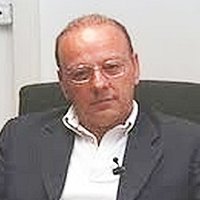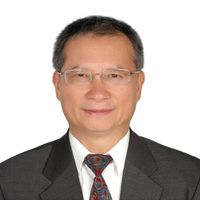Prevalence of congenital heart diseases among primary school children in the Niger Delta Region of Nigeria, West Africa
Published on: 26th September, 2019
OCLC Number/Unique Identifier: 8333013062
Introduction: Congenital heart diseases (CHD) are leading causes of childhood morbidity and mortality especially in developing countries. Community-based studies are important in ascertaining the burden of the disease.
Objectives: The study was set out to determine the prevalence and types of CHD among primary school children in Port Harcourt Local Government Area (PHALGA) of Rivers State, Niger Delta, Nigeria.
Methods: A total of 1,712 primary school pupils were selected by multistage sampling from twelve schools in PHALGA. A questionnaire was used to obtain information from pupil’s parents on their child’s biodata and symptoms suggestive of heart disease. General physical and cardiovascular system examinations were carried out on each selected pupil, following which those with symptoms and/or signs suggestive of heart disease had echocardiographic confirmation of their cardiac status.
Results: The 1,712 subjects were aged 5-14 (mean 8.48 ± 2.30) years. 874 (51.1%) were females while males were 838 (48.9%). The study revealed that 31 pupils had congenital heart diseases confirmed by echocardiography, giving a prevalence of 18.1 per 1,000 pupils. The commonest cardiac defects seen were acyanotic CHD in 30 (96.8%) pupils while cyanotic CHD was seen in only one (3.2%) pupil. Among the acyanotic CHD, atrial septal defects (83.9%) followed by ventricular septal defects (9.7%) were the commonest. CHD occurred with higher frequency among females (64.5%) and among the younger age group of 5-9 years (61.3%) though these were not statistically significant (p > 0.005).
Conclusion: Cardiac examination as part of compulsory health screening at primary school entry will help detect children with CHD, reduce delay in diagnosis for intervention, avert debilitating morbidity and assure a better quality of life.
Novel paclitaxel-coated balloon angioplasty via single retrograde popliteal access for challenging superficial femoral artery and iliac artery lesions?
Published on: 24th September, 2019
OCLC Number/Unique Identifier: 8261371866
Objectives: We report our results regarding the use of BioPath™ paclitaxel-coated balloon catheters for superficial or distal external iliac artery revascularization via single retrograde popliteal access.
Methods: We included 105 prospective consecutive patients. Single retrograde popliteal access was achieved under ultrasound guidance with the patients laid prone. An over-the-wire atherectomy system was used if risk of distal embolization was high due to plaque intensity of the target lesion. A 4 to 7 mm-diameter BioPath™ 035 balloon catheter was used for all lesions. Follow-up at 6th month included doppler ultrasound examination for patency.
Results: Seventy-two patients (68.6%) had total SFA occlusion and 41 patients (39%) had concomitant external iliac artery involvement, out of whom 31 (29.5%) had total occlusion. Procedural success 90.5% for superficial femoral artery and 85.3% for external iliac artery. One-year patency rates in SFA and EIA were 84.8% and 80.4%, respectively
Conclusion: Single retrograde popliteal access and drug-coated balloon angioplasty may offer a useful alternative to known modalities in treatment of challenging superficial femoral artery and concomitant iliac artery lesions
Arrhythmia of the heart - computer analysis
Published on: 20th September, 2019
The problem of synchronization of oscillations of various physical nature is discussed. From the standpoint of the theory of synchronism, a model of the heart is considered as a system of four connected between self-oscillating links: two atria and two ventricles. The synchronous and asynchronous operating modes are considered at sinusoidal and relaxation oscillations. A computer program has been compiled that simulates the fluctuations in the heart using four differential equations. Four examples of calculation according to the program are given for asynchronous and synchronous operation modes. The possibility of evaluating the ablation procedure from the perspective of a computer model is discussed.
A mouse model of coronary microvacsular disease using a photochemical approach
Published on: 18th September, 2019
OCLC Number/Unique Identifier: 8270725834
The development of reproducible rodent models of coronary microvascular disease (MVD) is essential for the early detection, treatment, and mechanism study of the pathophysiology. We hypothesized that endothelial dysfunction and subsequent microthrombi in the coronary arterioles, two early events in clinical coronary MVD, could be reproduced by photochemical reaction (PCR) technology in mice hearts. After rose bengal (one of photosensitizers) was administrated systemically, a green light was locally used to activate the photosensitizer, inducing over-production of oxidative stress in the heart. Following PCR, animals demonstrated reproducible endothelial injury, occlusion in arterioles, focal ischemia, and infarct-let with preserved cardiac function. Our technique has proven to be a reliable and reproducible means of creating coronary MVD in mice. We believe that this is an ideal model for developing a novel molecular tracer for earlier detection of coronary MVD, for testing new anti-fibrinolytic drugs, and for investigating the complex pathophysiology of coronary MVD. The protocol for establishing this model takes about thirty to forty minutes.
Anomalies of coronary artery origin: About two cases
Published on: 13th September, 2019
OCLC Number/Unique Identifier: 8270707766
Anomalies of coronary artery origin are congenital malformations characterized by the abnormal birth of a coronary artery from the controlateral coronary aortic sinus (birth of the left coronary artery from the right sinus or birth of the right coronary artery from the left sinus). The artery concerned has an abnormal initial path between the aorta and the pulmonary artery; this segment is most often intramural, in the aortic wall. They are rare with a prevalence (0.1% to 0.3% of the population).
They pose a high risk of sudden stress death related to exercise myocardial ischemia. The most common mode of discovery is aborted sudden death, but sometimes fortuitously. The contribution of multi-round CT is described for the positive diagnosis of these anatomical variations, sometimes delicate in coronary angiography, but also for the distinction between “benign” and “malignant” forms, potentially responsible for myocardial ischemia. Treatment is usually surgical in symptomatic forms. We report the cases of two patients with coronary connection abnormalities discovered in adulthood.
How often is Klippel-Feil Syndrome associated with congential heart disease presentation of five cases and a review of the literature
Published on: 3rd September, 2019
OCLC Number/Unique Identifier: 8270717914
Introduction: Klippel-Feil syndrome (KFS), is a bone disorder characterized by the abnormal joining (fusion) of two or more spinal bones in the neck (cervical vertebrae), which is present from birth. Three major features result from this abnormality: a short neck, a limited range of motion in the neck, and a low hairline at the back of the head. In some individuals, KFS can be associated with a variety of additional symptoms and physical abnormalities which contribute in the deterioration and complication of the condition of the child.
Aim of presentation: Here, we report five children from Kosovo with KFS associated with different heart abnormalities, clinical presentation, diagnosis, management, and outcomes of selected conditions in resources-limited settings.
Methods: Retrospectively we analysed medical reports of five children, diagnosed at different age with congenital disease and clinical and lab signs of Klippel-Feil syndrome.
Conclusion: Basing on our cases, all diagnosed in a small country as a Kosovo, we can conclude that KFS is not such a rare condition. In addition, such syndrome is not so rarely associated with different congenital heart disease. In four cases cardiac surgery was indicated and successfully was done abroad Kosovo in the lack of such services in Kosovo.
Role of novel cardiac biomarkers for the diagnosis, risk stratification, and prognostication among patients with heart failure
Published on: 22nd August, 2019
OCLC Number/Unique Identifier: 8212771729
Background: Current guidelines for diagnosis and management of heart failure (HF) rely on clinical findings and natriuretic peptide values, but evidence suggests that recently identified cardiac biomarkers may aid in early detection of HF and improve risk stratification. The aim of this study was to assess the diagnostic and prognostic utility of multiple biomarkers in patients with HF and left ventricular systolic dysfunction (LVSD).
Methods: High-sensitivity cardiac troponin I (cTnI), N-terminal pro b-type natriuretic peptide (NT-proBNP), interleukin-6 (IL-6), endothelin-1 (ET-1), pro-matrix metalloproteinase-9 (pMMP-9), and tumor necrosis factor-alpha (TNF-α) were measured using single-molecule counting technology in 200 patients with varying stages of HF. Plasma detection with cross-sectional associations of biomarkers across all HF stages, and advanced-therapy and transplant-free survival were assessed using multivariate analysis and Cox regression analyses, respectively.
Results: NTproBNP, pMMP-9, IL-6 were elevated in early, asymptomatic stages of HF, and increased with HF severity. Higher circulating levels of combined IL-6, NTproBNP, and cTnI predicted significantly worse survival at 1500-day follow-up. Cox regression analysis adjusted for ACC/AHA HF stages demonstrated that a higher concentration of IL-6 and cTnI conferred greater risks in terms of time to death, implantation of left ventricular assist device (LVAD), or heart transplantation.
Conclusion: Biomarkers of inflammation, LV remodeling, and myocardial injury were elevated in HF and increased with HF severity. Patients had a significantly higher risk of serious cardiac events if multiple biomarkers were elevated. These findings support measuring NTproBNP, cTnI and IL-6 among patients with HF and LVSD for diagnostic and prognostic purposes.
Late discover of a traumatic cardiac injury: Case report
Published on: 19th August, 2019
OCLC Number/Unique Identifier: 8212828090
Blunt chest trauma leads to a wide range of lesions, relatively minor parietal injuries to potentially fatal cardiac lesions, making diagnosis and management difficult. The diagnosis is currently facilitated by imaging, however, these lesions may go unnoticed and be discovered late through complications.
We report the case of a neglected heart wound revealed by a heart failure. This case is notable due to a favourable outcome despite a delay in diagnosis due to a lack of pericardial effusion and the absence of cardiac symptoms, and a long delay from injury to appropriate treatment in the presence of a penetrating cardiac wound deep enough to cause a muscular ventricular septal defect and lacerate the anterior mitral leaflet.
Timing of cardiac surgery and other intervention among children with congenital heart disease: A review article
Published on: 9th August, 2019
OCLC Number/Unique Identifier: 8212836826
Background: Early diagnosis and improved facilities are necessary for determining the optimal timing of surgery and other interventions in children with congenital heart diseases in Nigeria. This is because late presentation, late diagnosis and delayed surgery can lead to mortality and affect the quality of life among these children.
Objectives: This review article is aimed at enumerating the timing of cardiac surgeries and other interventions and to seek if there is any factor associated with the timing of cardiac surgery.
Methods: A search on PubMed database, World Health Organization libraries, Google scholar, TRIP database, and reference lists of selected articles on timing of cardiac surgery in children was done. The Cochrane Database of Systematic Reviews was also searched. We noted few data from African setting. Key words such as timing of cardiac surgery; children, congenital heart defect were used.
Conclusion: Appropriate timing for cardiac surgery in children with congenital heart disease is very important as late surgical intervention could result in several morbidities and mortality.
P wave dispersion in patients with premenstrual dysphoric disorder
Published on: 31st July, 2019
OCLC Number/Unique Identifier: 8192811430
Background: Growing evidence has revealed that fear and anxiety related situations could affect cardiac parameters. P wave dispersion (Pd) is an important index. In the present study, we aimed to evaluate Pd values in patients with premenstrual dysphoric disorder.
Methods: The study was composed of twenty-five female patients with premenstrual dysphoric disorder and same number of healthy controls. Pd, Pmin and Pmax values were determined by electrocardiogram (ECG) in the subjects.
Results: It was found that patients with premenstrual dysphoric disorder had considerably higher Pmax and Pmin values compared to those of healthy subjects. Pd was also significantly higher in patients with premenstrual dysphoric disorders than that of healthy subjects.
Conclusion: Study suggests that patients with premenstrual dysphoric disorder seems to have increased Pd, as can be seen in anxiety and fear related clinical conditions, considering that this group of patients have an increased trend to cardiac abnormalities, particularly cardiac arrythmias. To access strong conclusion, it is required novel studies with larger samples.




